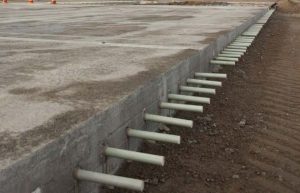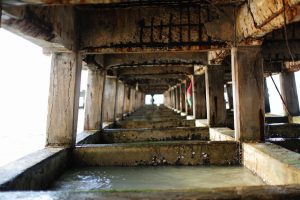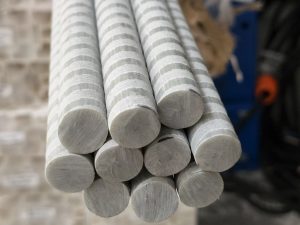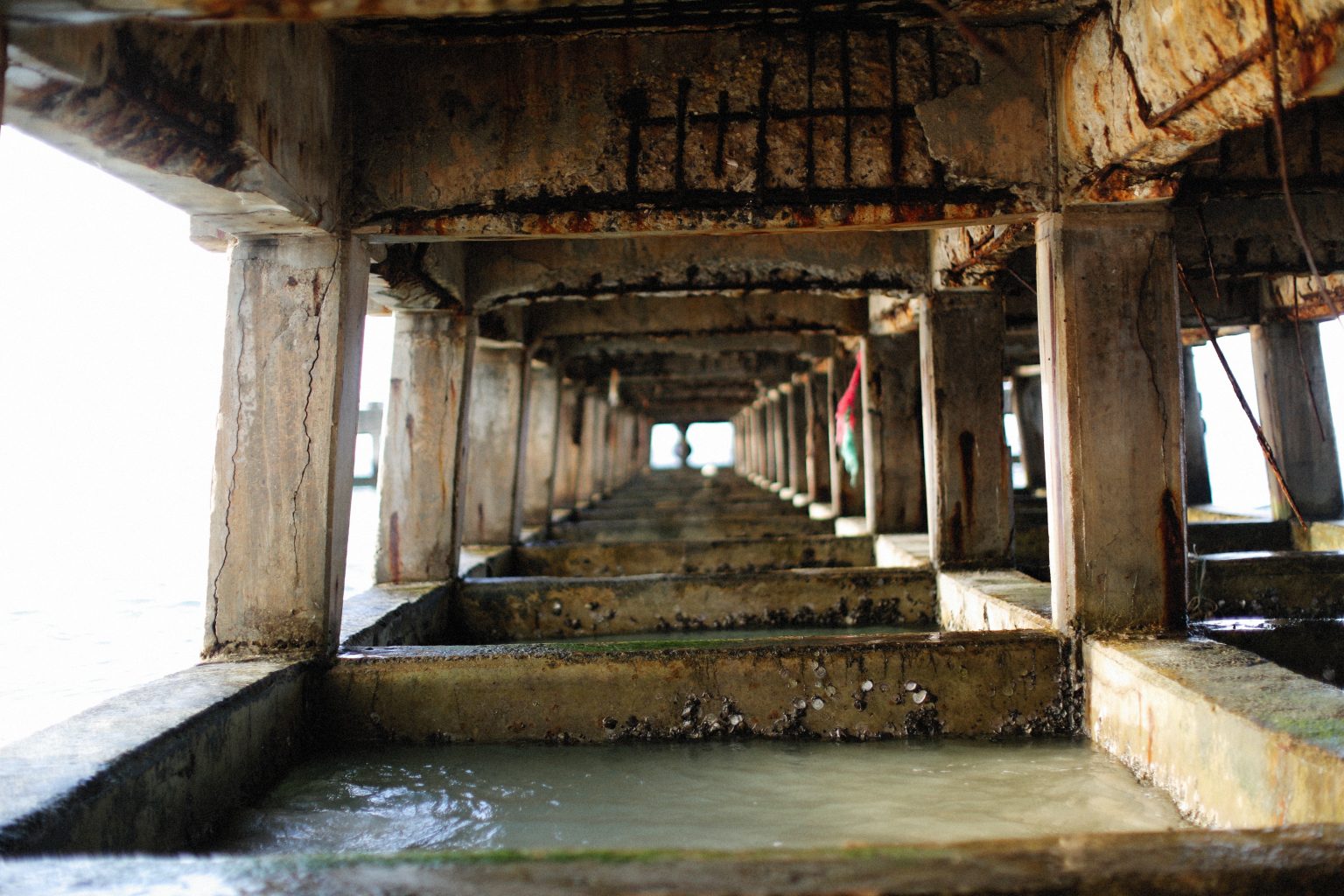Thinking Smarter and Greener with GFRP Reinforcement and dowels
With tensile strength 2x that of steel and non corrosive, Casta Smart-Bar glass fiber-reinforced polymer (GFRP) rebar is designed to replace steel reinforcement in almost any application both as primary or secondary reinforcement. It has been used globally for a number of years now in a range of applications to major infrastructure projects as well as in highly corrosive environments including underwater structures, coastal environments and industrial sites.

Smart-Bar is ACI, ASTM and CSA Grade III compliant. Standard approval processes and procurement processes are the same as for traditional construction materials, making it easy for engineers to change from traditional rebar to GFRP rebar.
The challenge for asset owners, design and engineering consultants is to gain the best design life cycle for a project, which has seen GFRP rebar prove itself, providing a competitive and sustainable advantage. Issues of corrosion are paramount, particularly in marine and coastal areas teamed with a warm environment.
Using Smart-Bar and Smart-Dowel as an alternative reinforcement to steel eliminates the risk of corrosion and associated costs. As there is no concrete spalling, maintenance and corrosion protection measures are not required. Based on life cycle cost analysis, the use of Smart-Bar provides competitive prices, zero maintenance, excellent durability, and long design life.
It has a high tensile strength (2x greater than steel), high modulus, and a range of physical and mechanical, Smart-Bar leads the world in durable rebar.
For as long as most engineers will recall, steel reinforcement in concrete has been susceptible to corrosion. The tension/compression strength qualities, linear elasticity behavior, compatible thermal expansion/contraction, and greater longevity of steel reinforced concrete as a composite material continue to make it a popular choice for use in construction despite its limitations.
The ability of the concrete cover to isolate/protect steel from corrosion is crucial to the durability of reinforced concrete. The tendency of reinforcing steel to corrode owing to environmental variables of where concrete is used is one of the main negatives of employing it. Areas with high water content, naturally occurring corrosives and acids, and saltwater settings are more likely to experience corrosion brought on by chloride attack or carbonation.
 For instance, research on wharf structures in New Zealand revealed that uncracked concrete elements were subject to a non-linear, 0.5–1mm per year chloride attack, with varied absorption rates depending on the concrete mix and upkeep. According to this, a 100mm cover may effectively be decreased to 50mm in 50 years and zero in 100 years under normal maintenance conditions. As soon as oxygen and chloride come into contact with steel, cracking and corrosion will begin. When reinforcement is exposed to oxygen, steel’s conductivity aids in the corrosion process. Once the corrosion process has begun, it spreads steadily and predictably until almost all of the original steel has been consumed and converted to iron oxide (rust), rendering it incapable of meeting structural demands.
For instance, research on wharf structures in New Zealand revealed that uncracked concrete elements were subject to a non-linear, 0.5–1mm per year chloride attack, with varied absorption rates depending on the concrete mix and upkeep. According to this, a 100mm cover may effectively be decreased to 50mm in 50 years and zero in 100 years under normal maintenance conditions. As soon as oxygen and chloride come into contact with steel, cracking and corrosion will begin. When reinforcement is exposed to oxygen, steel’s conductivity aids in the corrosion process. Once the corrosion process has begun, it spreads steadily and predictably until almost all of the original steel has been consumed and converted to iron oxide (rust), rendering it incapable of meeting structural demands.
At this stage, the total structure is far weaker than it was in its initial form since the concrete is also affected as steel contributes to oxide jacking, which causes stress cracking. In order to accommodate the motions and release the tensions, plain concrete cracks and splits because it is too brittle to withstand or absorb these forces.
Because the concrete has split, it is no longer as effective at protecting the steel from corrosives, which causes the corrosion potential to increase. Through the fractures, additional water or pollutants can easily reach the steel inside the concrete. unfortunate given how challenging and occasionally impossible it is to replace or repair steel in place
 Engineers need to consider different ways of improving the durability and corrosion resistance of concrete in order to protect steel. That is where GFRP (Glass Fibre Reinforced Polymers) reinforced concrete can mitigate corrosion of reinforcing steel.
Engineers need to consider different ways of improving the durability and corrosion resistance of concrete in order to protect steel. That is where GFRP (Glass Fibre Reinforced Polymers) reinforced concrete can mitigate corrosion of reinforcing steel.
- Non-conductive and electro-magnetically neutral
- Non-magnetic – no interference with sensitive equipment
- Lightweight: ¼ the weight of steel
- Maintains good thermal insulation values
- No thermal cycling impact. Thermal expansion coefficient closer to concrete than steel. Ideal for areas with extreme temperature cycles.
- Over 100 years retention of strength and modulus in high pH environments
- Low Environmental Impact. Consumes approximately 85% the embodied energy of steel
Talk with the Casta team today to understand how you can replace steel mesh and bar in your project with this high performance reinforcement proven across USA, Saudi Arabia and now Australia and New Zealand

